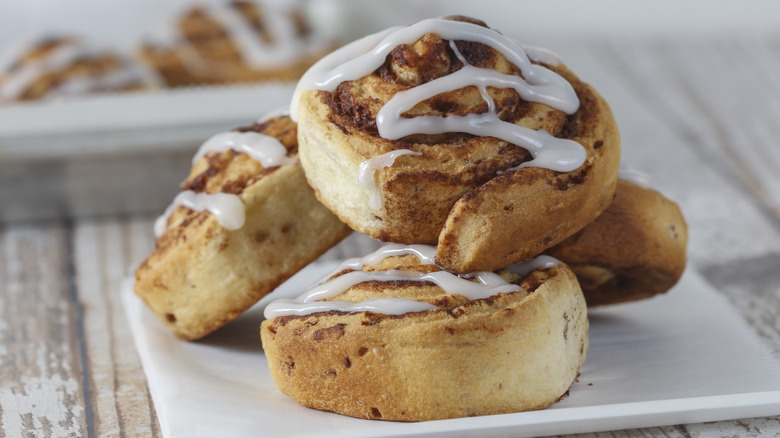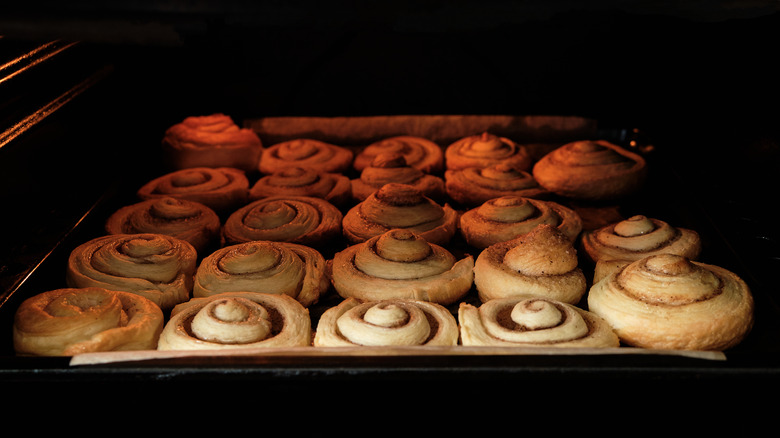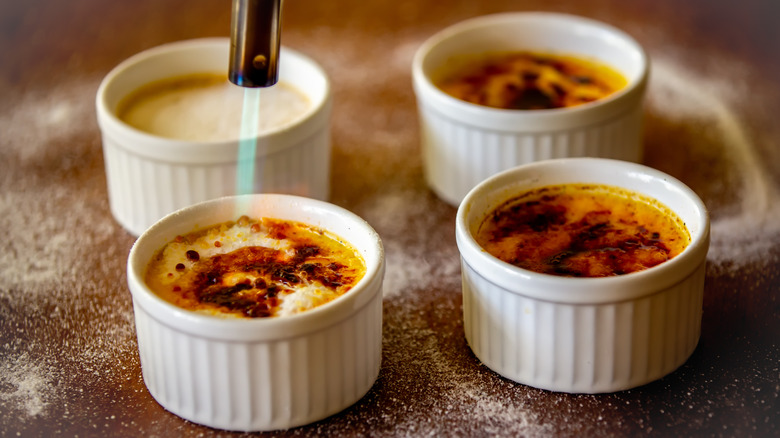Turn Canned Cinnamon Rolls Into A Gourmet Treat By Brûléeing The Top
We all love a good cinnamon roll, though making them from scratch can be a bit labor-intensive. Still, in this age of at-home hacks designed to turn store-bought fare into a gourmet treat, there are plenty of plus-ups for that can of oven-ready cinnamon rolls. Brûléeing them is just one of these tricks, but we have to admit it's a particularly clever one.
Even better, it can be accomplished even if you don't own one of those nifty culinary torches. In fact, you can do it by just adding a couple of easy steps to the directions on the can.
Recipes suggest taking the cinnamon buns out of the oven about five minutes before they are done, then dusting the tops of them with a generous amount of sugar. The cinnamon rolls would then be returned to the oven, specifically to its top rack, and the oven set to broil. After the cinnamon rolls have cooled, the sugar will have caramelized, first melting in the oven and then hardening. The end result is that crispy, sugary top that cracks and melts in your mouth. That sounds to us like a cinnamon roll worth fighting over.
Brûlée away
The brûlée process is, of course, most recognized in crème brûlée, the dessert item whose name literally translates to "burnt cream," available in upscale restaurants around the world. Done correctly, crème brûlée can require a fairly complicated process –- though we do have some tips for making it like a pro.
Of course, as the canned cinnamon roll hack above shows, the actual task of brûléeing can be applied to an endless amount of sweet treats. It is crucial, however, to not skip the steps of placing the rolls on the very top rack when they go back in and to make sure you set the oven to broil. Broiling is a cooking technique that roughly approximates grilling, specifically used to either crisp up more delicate foods or to give them a nice, brown top. It also only uses the upper part of the oven, with the oven's ceiling providing the heat necessary to brown, or in this case, brûlée the food, melting the sugar on top of the cinnamon rolls.
What kind of sugar should you use to make brûlée cinnamon rolls?
Given that you are making cinnamon rolls, it might be tempting to switch out the sugar with more cinnamon and simply use that and give them an extra sweet-hot kick as well as the satisfying brûlée crunch on top. This should be avoided. Coming as it does from tree bark, cinnamon is highly fibrous and doesn't melt the same way that sugar does.
In fact, there's a reason that white refined sugar is stipulated in so many brûlée recipes. It is simply best for caramelization. Not only do the small granules melt more evenly than raw and unrefined sugar, but the color of white sugar means you can see as it starts to melt and bubble. It's harder to tell with raw or brown varieties, meaning it's easier to burn rather than brûlée them.
It is also important to recognize that while using your oven's broil setting might work for caramelizing a thin layer of sugar on some store-bought cinnamon rolls, the technique is ill-equipped for making traditional crème brûlée. For that part, you are better off simply buying a butane kitchen torch. It's more fun that way, anyway.


